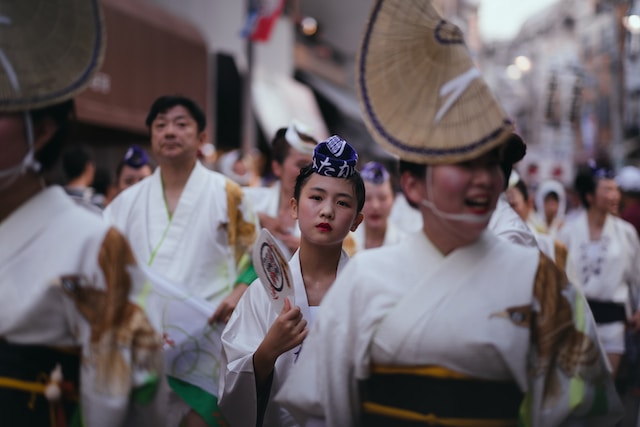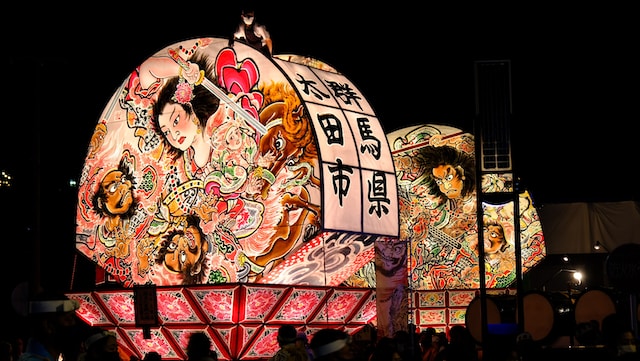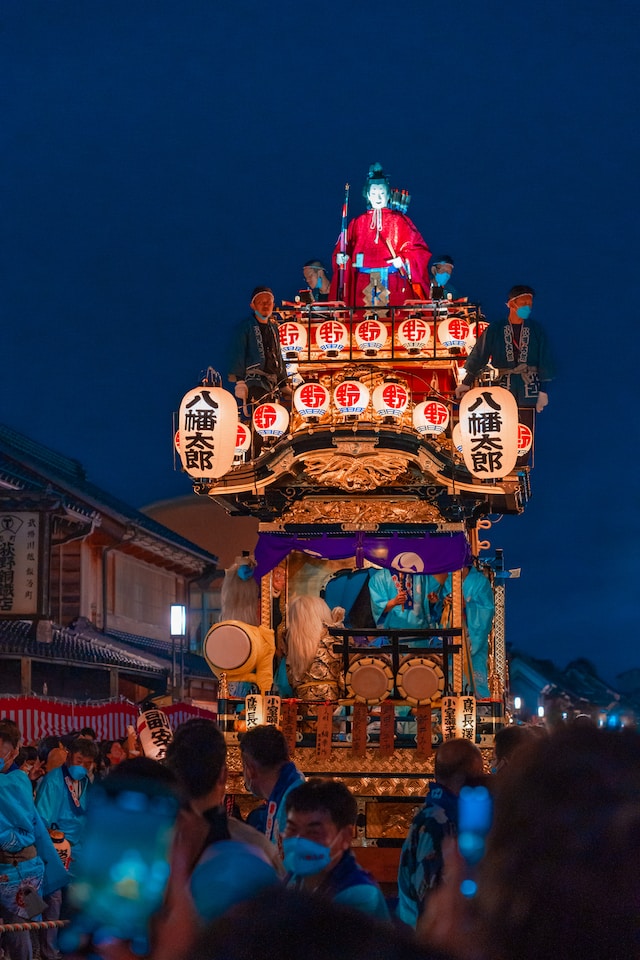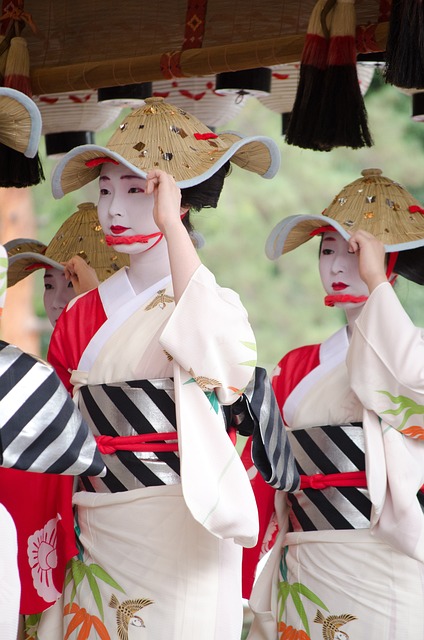
Festivals in Japan are awesome. These are the four most famous festivals in Japan:
Gion Matsuri
Celebrated every year in July, Gion Matsuri is considered one of the most important festivals in Japan. It’s a month-long celebration with parades, music, dancing, and traditional Japanese food. The highlight of the festival is the procession of portable shrines or yamaboko, which are decorated with elaborate designs and pulled by hundreds of people.
Hanami
Also known as the Cherry Blossom Festival, Hanami is celebrated in Japan every year in late March or early April. It’s a time to admire the beauty of cherry blossoms and enjoy picnics with family and friends. Many Japanese people believe that the blooming of cherry blossoms symbolizes the start of a new season, and it’s a time to reflect on the transience of life.
Asakusa Samba Festival
This festival is held in Tokyo every year in August and attracts over half a million people. It’s a celebration of Brazilian culture and features samba dancers, musicians, and acrobats. The main event is a parade that takes place in the streets of Asakusa, where participants wear colorful costumes and dance to the lively beat of Brazilian music.
Aomori Nebuta Festival
This festival is held in Aomori, a city located in the northern part of Japan, every year in August. It’s a celebration of traditional Japanese culture and features illuminated floats or nebuta, which are made of paper and bamboo.

The floats are decorated with intricate designs and have figures from Japanese myths and legends. The festival ends with a grand finale, where the floats are set on fire and floated down the river, creating a striking visual display.
Overall, festivals in Japan are a great way to experience the country’s rich cultural heritage and traditions. They bring people from all walks of life together to celebrate and have a good time, and they offer a glimpse into the unique and diverse aspects of Japanese culture.
Tokyo Festivals
Here are all the festivals held in Tokyo, along with the ward each festival is held in:

Central and East Tokyo
- Kanda Matsuri: This festival is one of the three largest Shinto festivals in Tokyo, held in mid-May in the Kanda area of central Tokyo. It features a parade of portable shrines (mikoshi) and traditional Japanese music performances.
- Tokyo Game Show: This annual event is held in September at the Makuhari Messe convention center in Chiba, near Tokyo. It is one of the largest video game exhibitions in the world, featuring exhibits from major game publishers, game competitions, and keynote speeches from industry leaders.
- Tokyo International Film Festival: This event is one of the largest film festivals in Asia, held annually in October in Roppongi Hills, Tokyo. It showcases a wide range of films from around the world, including premieres of new Japanese and international films.
- Tokyo Jazz Festival: This event is held annually in September at venues throughout Tokyo. It features performances by jazz musicians from around the world, as well as workshops and educational programs for aspiring jazz musicians.
- Sanja Matsuri: This festival is one of the most famous Shinto festivals in Tokyo, held annually in mid-May at the Asakusa Shrine in the Asakusa area of Tokyo. The festival features a procession of portable shrines (mikoshi), taiko drumming, and traditional Japanese music and dance performances.
Western Tokyo
- Harajuku Omotesando Genki Matsuri Super Yosakoi: This festival is held annually in late August in the Harajuku and Omotesando areas of Tokyo. It features traditional Japanese dance performances known as yosakoi, as well as food stalls and carnival games. The festival attracts thousands of participants and spectators each year.
- Yushima Tenjin Plum Festival: This Shinto festival is held annually in late February to early March at the Yushima Tenjin Shrine in Bunkyo Ward, Tokyo. The festival celebrates the blooming of plum blossoms and features various cultural events such as Japanese tea ceremonies, traditional Japanese music performances, and market stalls selling local goods and souvenirs. The shrine is known for having over 300 plum trees of various species, which attract visitors during the festival.
- Ome City Hina Doll Festival: This Shinto festival is held in early March in Ome City, western Tokyo. The festival celebrates the traditional Japanese festival of Hinamatsuri (Doll’s Festival) and features displays of ornate dolls.
- Mitake Gorge Firefly Festival: This festival takes place in June near Mitake Gorge in western Tokyo. The festival celebrates the fireflies that are seen in the area during the summer months.
- Takao Mountain Sennichi Kaihekiten: This festival takes place in mid-August near Takao Mountain in western Tokyo. The festival features a variety of events and activities, including a traditional Japanese dance performance and a Shinto ritual.
- Koenji Awa Odori Festival: This festival takes place in late August in Koenji, western Tokyo. The festival is a lively celebration of traditional Japanese dance and features thousands of performers dressed in colorful costumes.

- Tama City Iris Festival: This Shinto festival is held in late May in Tama City, western Tokyo. The festival celebrates the blooming of the irises in the area and features a variety of traditional Japanese performances and activities.
Each festival has its unique charm and attracts locals and tourists alike from all over the world. The Kanda Matsuri, for example, has been celebrated for over 400 years and features a parade of extravagant floats and traditional costumes. The Sumida River Fireworks Festival is a stunning pyrotechnic display that lights up the night sky over the Sumida River. Meanwhile, the Tokyo Game Show is a gathering of gaming enthusiasts, where gaming companies showcase their latest products and technology.
Whether you’re interested in traditional Japanese culture, music, or food, Tokyo has a festival that caters to your interests. Each festival brings a different array of sensory experiences that make you fall in love with Japan time and time again. So if you’re planning a trip to Tokyo, make sure to check out the city’s vibrant festival scene and participate in the festivities.

